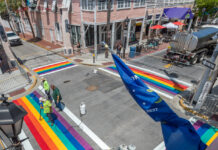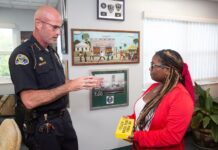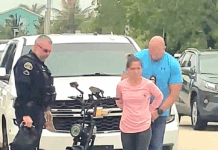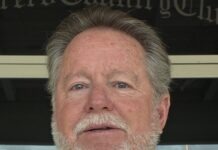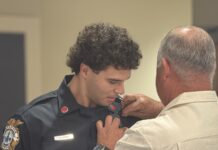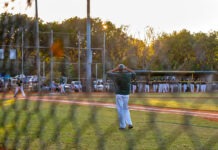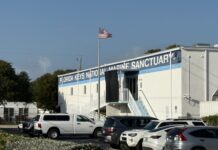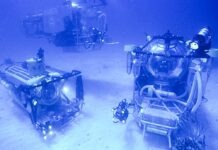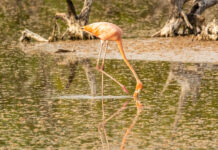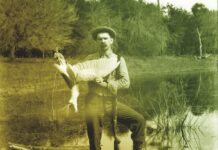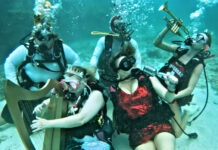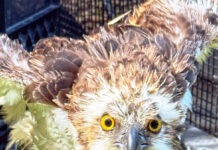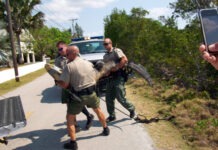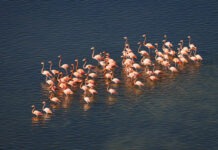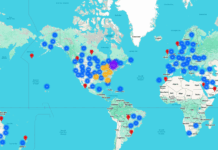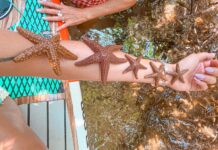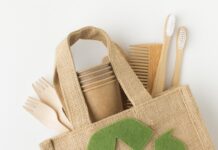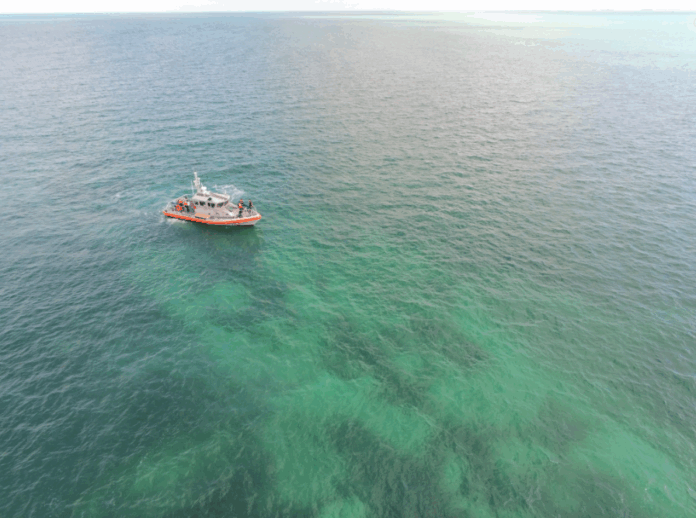
A bald patch of grass in someone’s front yard can be restored by spreading seed or strips of sod. But when seagrass in shallow ocean water gets shredded by a boat’s propeller, the cure is much more complicated — more like getting hair plugs instead of using Rogaine or a toupee.
In 2016, a 137-foot catamaran ferry, Big Cat Express, ran aground off Key West, devastating a large patch of protected seagrass in the Florida Keys National Marine Sanctuary.
Four years later, in 2020, the ferry company agreed to pay $2.2 million to fund the restoration of the injured seagrass, invertebrates, sponges and fish species in the area.
Now, in 2025, the National Oceanic and Atmospheric Administration is leading seagrass restoration efforts at the Big Cat grounding site, about 1.9 miles west of Wisteria Island, just off Key West, at the south entrance to the Lakes Passage. The project also includes the U.S. Coast Guard and a Florida-based marine restoration company called Sea & Shoreline.
As of last week, seagrass shoots taken from other areas of the marine sanctuary, with their roots and stems (known as rhizomes) intact, were planted at the grounding site, an area roughly the size of a football field’s end zone. Donor sites were spread out across a large area to minimize impact on those healthy seagrass beds.
The restoration effort has taken nearly a decade, but marine scientists are confident the positive impacts were worth the wait.
“This phase of the project is especially exciting; it’s the moment where years of planning and hard work are finally coming together,” said Alexandra Fine, sanctuary research specialist. “We are confident this restoration work will stabilize the injury area, encourage new seagrass growth and provide essential ecosystem benefits that extend beyond the site itself.”
Seagrass plugs were attached to 12-inch galvanized steel garden landscape stakes, then inserted into sediment tubes that had previously been sunk into the blowholes that were caused by the boat grounding. A total of 630 planting units were needed to address all of the seagrass damage, according to a press release from the sanctuary.
Restoration activities began on Earth Day in April, following environmental assessments, queen conch surveys and mapping of the injury locations near the Northwest Ship Channel.
Monitoring is the final step and will take place every 30 days for the next three months, as experts count the total number of planting units that remain alive and assess other benchmarks.
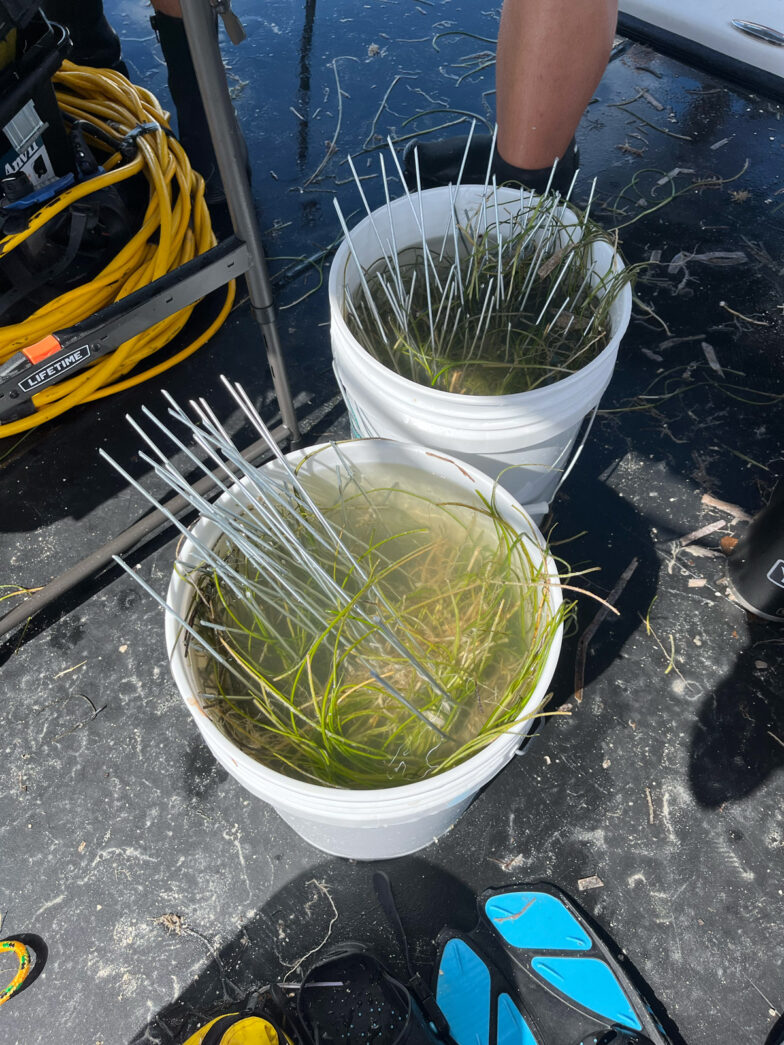
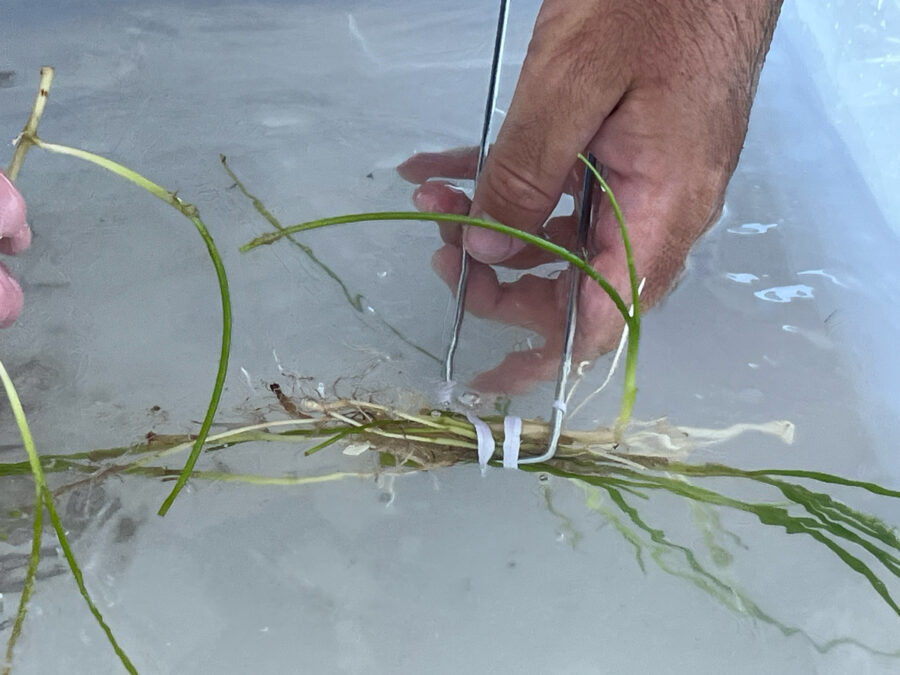
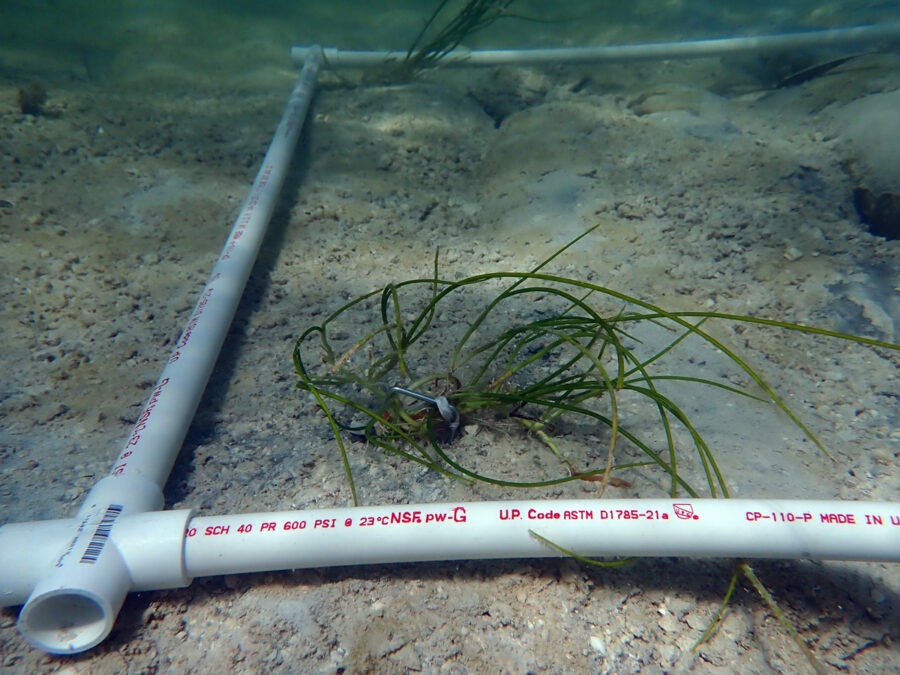
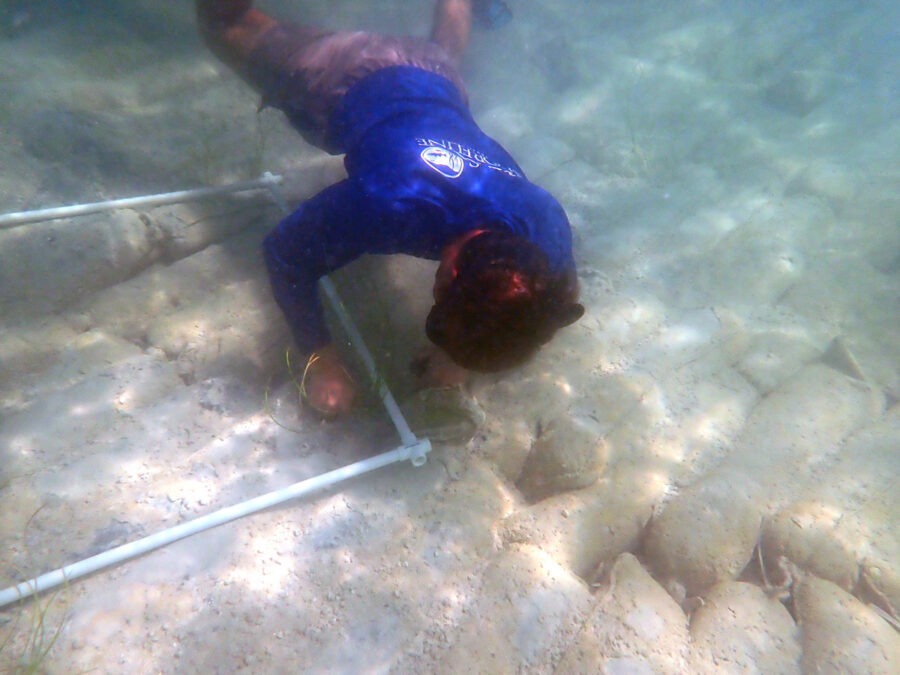
Importance of seagrass
Seagrasses are essential fish habitat. Coral reefs, hardbottom, seagrass meadows, mud flats and mangrove forests are all ecologically connected, according to the sancutary website. Many commercially and recreationally important fish and invertebrates, such as drums, sea trout and spiny lobster, rely on seagrasses during their juvenile stages of development before heading off to deeper waters.
Stone crabs, scallops, conchs, sea stars, seahorses, stingrays and nurse sharks also rely on seagrasses for habitat and foraging grounds. Some species are occasional or frequent visitors, while others live in seagrass habitats permanently. Queen conchs are year-round dwellers, and lay their egg masses on seagrass blades.
Seagrasses are also a crucial part of the diet for manatees, green sea turtles, conchs and urchins.
Seagrass meadows, with their underground root systems, help stabilize the ocean floor, while above ground, but still underwater, seagrass blades slow the flow of water, allowing sediments and pollutants from land to fall out of the water column and settle onto the seafloor. The blue water you see at the coral reef is in part due to seagrasses. Corals need clear water that is low in nutrients to thrive, and nearby habitats such as seagrasses and mangroves help keep suspended sediment levels low and buffer out nutrients, the sanctuary website states.
Save the seagrass — stay off it
While seagrass is essential for the Florida Keys ecosystem and marine habitats, humans pose a deadly threat.
Seagrass beds have declined due to water quality degradation, dredging, coastal development and boating impacts. “More than 300 vessel groundings are reported within Florida Keys National Marine Sanctuary each year, with nearly 80% of them impacting seagrass habitat. Many more groundings go unreported,” the sanctuary website states.
When a boat’s propeller hits seagrass, it makes a cut that can become wider and deeper as water moves through it. Over time, the entire meadow, and the animals that call it home, can be lost, making seagrass restoration a priority.
But scars can take years to decades to recover, so prevention is the best protection. Boaters can help by avoiding seagrass, trimming motors up in shallow water, and if stuck, pushing the boat off the flat. Using a motor to power off a flat will cause more damage.
